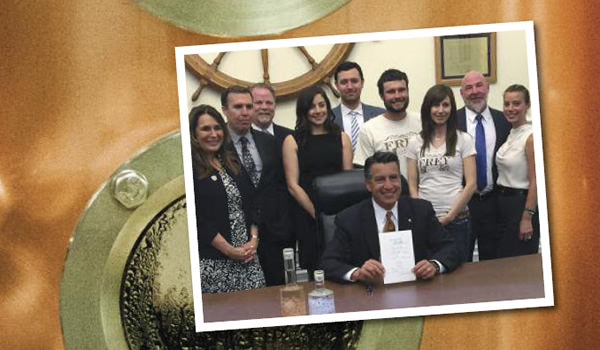edible notables
GAINING GROUND
Nevada craft distillery and winery laws are game changers.
WRITTEN BY SUE EDMONDSON
PHOTOS COURTESY OF FREY RANCH ESTATE DISTILLERY AND THE DEPOT
Nevada’s craft spirit distillers and wine producers are toasting two new laws enacted in May of last year. Each lessens restrictions that have long hampered the growth of those industries.
Lifting spirits
Tom Adams, co-owner of Seven Troughs Distilling Co. in Sparks, is happy with changes made by SB-246. Even the small ones are a victory, such as allowing customers to sample up to four ounces of spirits a day while visiting a distillery.
“It may not seem like a lot, but we make five products, so for us, it’s great,” Adams says. “Our samples are quarter-ounce servings, but when the limit was two ounces, people couldn’t taste everything we make.”
The larger impact is the higher cap on bottle sales at distilleries — from two per person a month to 12 per month, up to 72 bottles a year.
“Our sales have increased 25 to 35 percent since the law passed,” says Kate Baumann, who owns Verdi Local Distillery in Verdi with husband Jeremy. “It’s much more convenient for our customers.”
Colby Frey of Churchill Vineyards and Frey Ranch Estate Distillery in Fallon says he has a lot of out-of-area customers and lost a lot of sales under the previous law.
“The change is great for business,” he says.
Distributors now are out of the loop for charity donations, too. Previously, distillers were required to purchase their products back from their distributors in order to donate to charitable causes.
“We can do so much more for the nonprofits we support,” Adams says. “This makes sense for everyone.”
The next Napa?
“There currently are four wineries in the state,” says Dennis Eckmeyer, president of Nevada Vines & Wines (a nonprofit that promotes viticulture and winemaking in Northern Nevada). “That’s going to change now that AB-4 allows them in Washoe County. Wine grape co-ops in Verdi and Spanish Springs are in line to apply for licensing.”
Viticulture is integral to developer Ron Bath’s vision for a 28-acre parcel in Pleasant Valley. Subdivided into seven home sites, each will have an easement for growing wine grapes. The homeowners’ association will have the option of hiring a professional vineyard manager.
“It’s great to be on the ground floor of a whole new area of agriculture,” Bath says.
The law also requires wine producers who exceed 1,000 cases to use no less than 25 percent Nevada-grown grapes in their wines — a boon for farmers such as Frey, who converted acres of water-loving alfalfa to drought-busting grapes.
“We want to be farmers more than anything, and this law puts Nevada grapes at a premium,” Frey says.
Freelance writer Sue Edmondson writes for publications in Nevada and California. She’s thinking of adding wine grapes to her garden.
WRITTEN BY MICHAEL TRAGASH
ILLUSTRATION BY GREG BRADY


